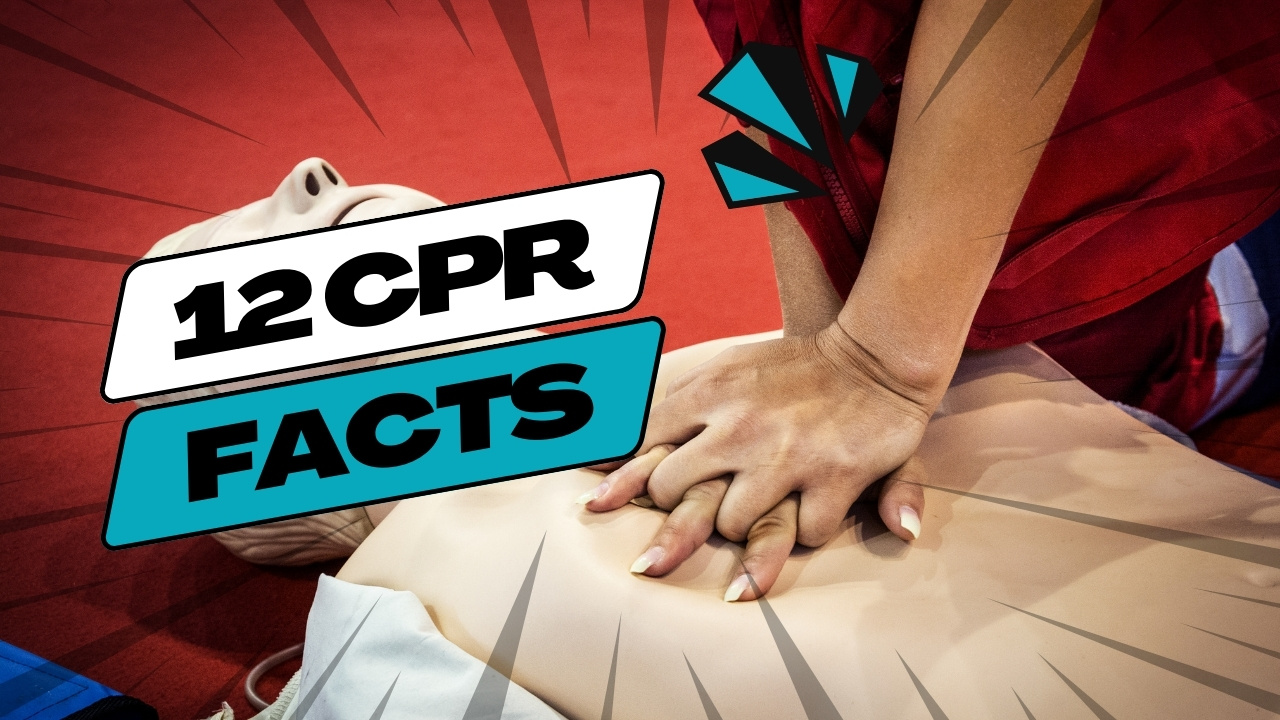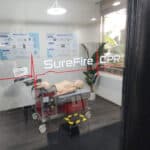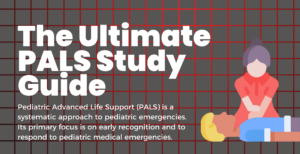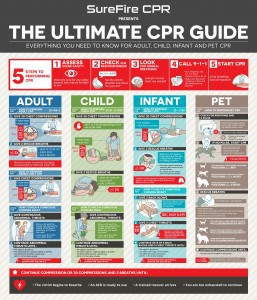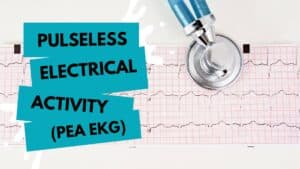Are you thinking about signing up for a CPR training course? We might be biased, but we think it’s one of the most important steps an individual can take. Don’t take our word for it, though. Consider these important facts and statistics to learn the truth about CPR.
Why CPR Knowledge Matters
You can’t predict when cardiac arrest will occur. However, you can prepare to help by learning CPR. Getting CPR certified takes only a few hours, and it could mean someone gets to return to their loved ones after a cardiac arrest.
CPR Statistics and Survival Rates
Here are some key statistics about CPR and cardiac arrest from the American Heart Association (AHA):
Rescue breathing is essential for getting oxygen into a victim’s lungs when the victim cannot breathe on their own. While chest compressions on their own may be sufficient for sudden cardiac arrest, secondary cardiac arrest events may require rescue breaths to deliver oxygen to the body quickly and prevent brain damage or death.
Secondary cardiac arrest occurs as a result of an airway or breathing problem and it is the most common type of cardiac arrest seen in infants and children. It is typically caused by drowning, choking, or drug overdose.
2. If you perform CPR, you can triple the person’s chance of survival.
According to the National Institutes of Health, early bystander CPR can double or triple a victim’s chance of survival after cardiac arrest. Studies have shown that the average time between a call to first responders and their arrival on the scene is approximately 7-8 minutes. During those critical minutes, survival rates after cardiac arrest significantly decline.
Individuals who suffer cardiac arrest in public often have the event witnessed by bystanders. If one of those bystanders administers CPR in the moments following the collapse, they increase the odds that the victim will survive the event and have a better quality of life afterward.
3. Compressions should be performed at a rate of 100-120/min. (to the beat of Stayin’ Alive)
When you suspect cardiac arrest, the sooner you begin chest compressions, the better. Position both your hands in the middle of the person’s chest between the nipples. Push down about two inches, at a rate of 100-120 compressions per minute. This CPR rate optimizes the chance of delivering blood and oxygen to essential organs through the compressions. To maintain this rate, keep the beat of the disco classic, Stayin’ Alive.
If you are performing CPR on a child or infant, you will want to maintain the same rate of 100-120 compressions per minute. However, you may only need to use one hand for a young child or two fingers if the victim is an infant. Always keep administering compressions until first responders arrive on the scene if possible.
During a cardiac arrest event, every second counts. One study found that for every minute a victim does not receive CPR, survival decreases by 7-10%. When CPR is administered by a bystander, the survival rate decreases by only 3-4% per minute from the time the victim collapses until defibrillation is provided.
Brain damage is another potential result after cardiac arrest. To increase the odds of survival without brain damage due to oxygen deprivation, CPR must be started within two minutes. After three minutes without CPR, lack of blood flow to the brain can lead to a brain injury that will progressively worsen in the minutes following.
5. 356,000 people suffer from cardiac arrest each year.
According to CPR statistics from the American Heart Association, more than 356,000 cardiac arrests occur outside of hospitals in the US every year. Nearly 90% of these events are fatal. Sudden cardiac arrest continues to be a national public health crisis, affecting up to 1,000 people every day and striking victims of all ages.
6. If someone is in cardiac arrest, CPR can only make the situation better.
There are risks associated with administering CPR, including cracked ribs and injury to organs. However, these risks pale in comparison to the benefits of administering CPR immediately following sudden cardiac arrest. Without this life saving act, fatalities from cardiac arrest are much higher.
CPR works best when it is delivered by healthcare professionals and first responders. However, bystanders trained in CPR can also make a significant difference for victims of cardiac arrest. Even if you haven’t taken a CPR class, you can administer hands-only CPR, which involves chest compression without rescue breath, if you are the only person on the scene.
7. The longest successful CPR save is 96 minutes long!
A common question is how long to perform CPR once it is started. We always recommend continuing CPR until first responders arrive or you are too tired to continue. If someone else is available on the scene, you can alternate to keep the compressions going at the recommended rate. Continued compressions may keep blood flowing and lower the risk for brain injury, damage, and death.
In 2011, a man in Goodhue, Minnesota survived a massive heart attack after receiving CPR for 96 minutes. Residents came together to take turns performing CPR until help arrived to take the Goodhue resident to the Mayo Clinic.
An AED is a critical piece of equipment that may save a life during cardiac arrest. These devices are located in offices and public buildings and can be used by anyone on the scene of a cardiac event. While CPR classes usually include instruction on how to use an AED, many of the devices will also talk you through the CPR process based on analysis of the heart’s rhythm.
As soon as an AED is available, turn it on and begin following the voice prompts. Two pads are placed on the upper right side and lower left side of the chest. The pads will record the heart rhythm and the device will tell you whether the victim requires a shock. Before administering a shock, make sure no one is touching the victim, say, “clear” in a loud voice, and push the shock button.
Learn How To Use An AED in 7 Steps.
9. The compression to ventilation ratio is 30 compressions to 2 breaths.
If you encounter an adult who is not breathing and does not appear to have a pulse, combining chest compressions with rescue breaths is the best approach. The ratio is 30 compressions to every 2 rescue breaths for this situation.
If the victim is a child or infant, the ratio of 30 compressions to 2 breaths is the same if there is only one responder. If two responders are available, you can increase the ratio to 15 compressions to 2 breaths in younger victims.
See CPR Ratio Chart.
10. Children as young as 9 have saved the lives of others with CPR.
Researchers have discovered that children as young as 9 can save a life by knowing CPR facts. In 2011, a 9-year-old did just that, saving his 2-year-old sister after she was found floating in a backyard pool. The brother performed a combination of chest compressions and rescue breathing, telling the local news station, “I knew what I was doing.”
As long as a child can follow the steps of CPR and is strong enough to handle the necessary depth of the compressions, they can learn this life saving act as well as adults.
11. With widespread access to AEDs at least 40,000 lives would be saved each year.
One study found that approximately 1,700 lives are saved in the US annually by bystanders using an AED. The benefits increased the longer it took emergency medical services to arise on the scene. If there was more widespread access to defibrillators, it is estimated that an additional 40,000 lives could be saved each year. An AED is the only way to restore normal heart rhythm after cardiac arrest.
See 6 More Things You Should Know About AED’s.
12. The life you save with CPR will most likely be someone you love.
Despite this fact, research has shown that people who experience cardiac arrest at home are less likely to receive CPR from family members, significantly reducing the survival rate for cardiac arrest events in the home. CPR training doesn’t just prepare you to assist a stranger on the street – it also equips you to offer life-saving assistance to a spouse, parent, sibling, or child in your own family.
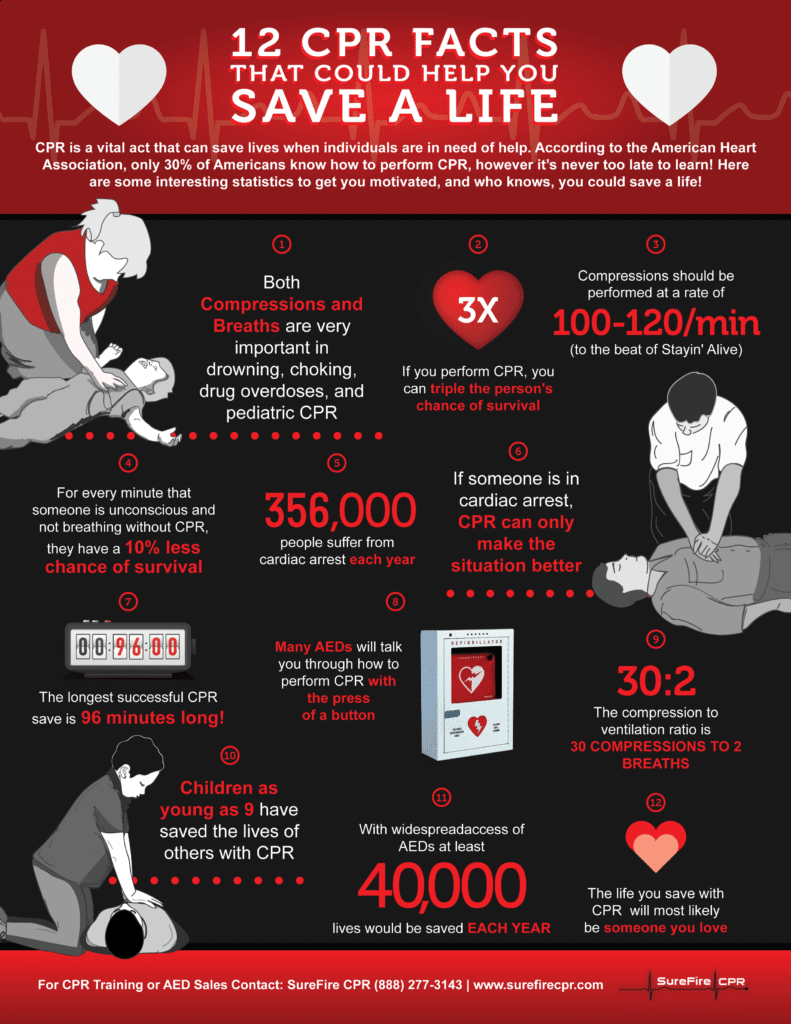
DOWNLOAD INFOGRAPHIC [1.2MB PNG]
Debunking CPR Myths
Let’s address some common misconceptions about CPR:
- “You need to perform mouth-to-mouth.” You can give hands-only CPR using just chest compressions.
- “You can’t perform CPR on a child.” Children and infants can (and should) receive CPR in the event of a cardiac emergency.
- “You shouldn’t attempt CPR on a stranger.” You should always intervene if you witness a sudden cardiac arrest as long as the scene is safe.
Empower Yourself with CPR Knowledge
We hope these facts about CPR have encouraged you to learn CPR and become a life-saver in your community. SureFire CPR, Southern California’s leading CPR training provider, has many locations and flexible class schedules for your convenience. Our team of expert instructors makes learning fun and engaging. Sign up today to begin your CPR education journey.
FAQ’s
What is most important during CPR?
The most important component of CPR is chest compressions. The AHA recognizes hands-only CPR as an effective option for sudden cardiac arrest treatment and recommends it for non-medical bystanders.
What are the risks of performing CPR?
It’s riskier not to perform CPR. With each minute that passes, a sudden cardiac arrest victim’s chance of survival decreases. Bystanders are protected by Good Samaritans laws, so don’t hesitate to act when you see someone who needs help.
Who can learn CPR? Are there any age or physical restrictions?
Anyone can learn CPR! There are no age restrictions and studies have shown that children ages 9 and up are capable of giving CPR. The most important thing is having enough strength to administer successful chest compressions.
How long should I continue CPR?
If you’re administering CPR as a bystander, you should continue CPR, with continuous chest compressions at a rate of 100-120 per minute, until medical professionals arrive.
What is the difference between CPR for adults, children, and infants?
The general steps of CPR are the same for any patient, but there are a few key differences for children and infants. A child or infant should receive 1 rescue breath every 3-5 seconds; adults receive 1 breath every 6 seconds. Hand placement and chest compression depth also vary depending on the victim’s size.

